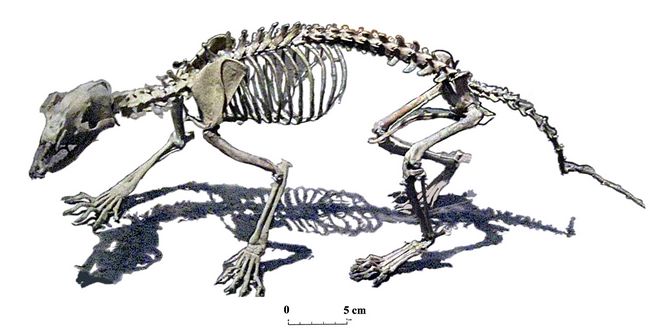Athena Review Image Archive ™
Hesperocyon gregarius skeleton

Skeleton of Hesperocyon gregarius (after)
Hesperocyon was
an early North American canid (family Canidae) living from Colorado to
southern Canada during the Middle Eocene period (Uintan and Bridgerian
ages, 42.5 - 31.0 mya). Hesperocyon was the earliest of the canids to evolve after the split of canids and felids at about 42 mya.
H. gregarius was a racoon-sized canid about 80 cm in length who lived 37-38 mya. Although a carnivore, it may also have been an omnivore, unlike the later Borophaginae who split from the Hesperocyons.
The Canidae subfamily Hesperocyoninae probably arose out of Hesperocyon
to become the first of the three great canid groups, along with
Borophaginae (36–2 mya), and the lineage that led to present-day
Canidae, comprising wolves, dogs, foxes, coyotes, and jackals. At
least 28 species in 5 distinct genera evolved out of Hesperocyon, including Mesocyon (31–15 mya).
References:
Wang and Tedford 2009.
Copyright © 1996-2020 Rust Family Foundation (All Rights Reserved).